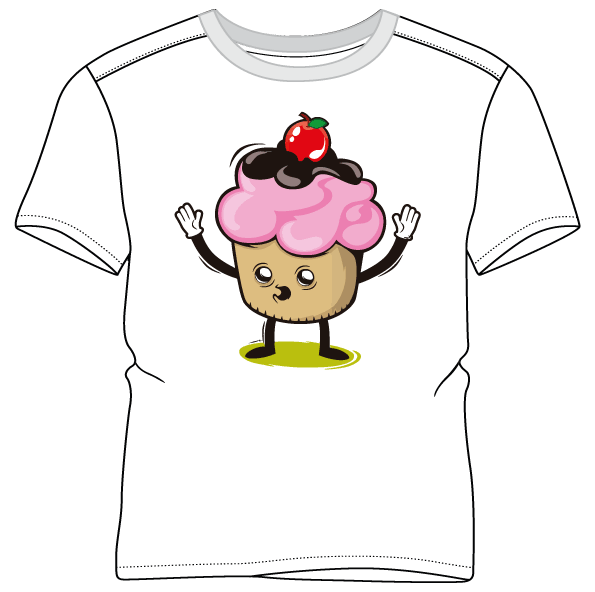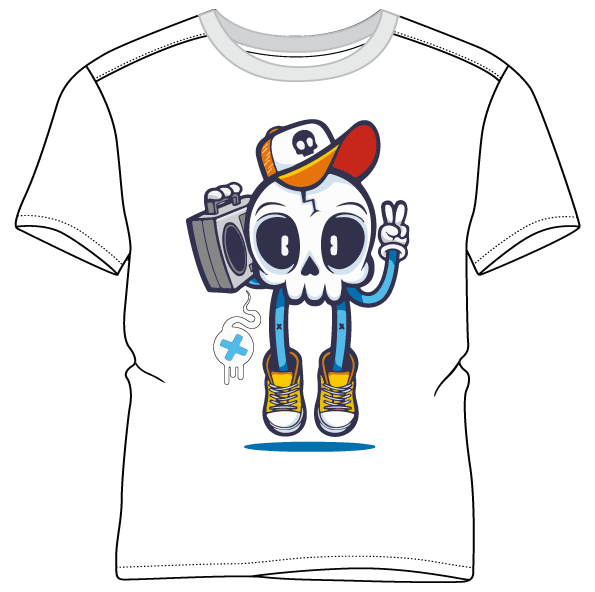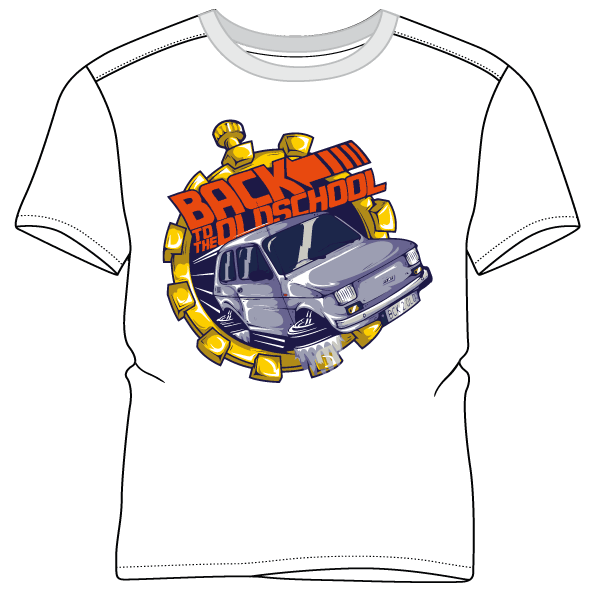Table of contents
Tee shirt design is more than just putting graphics on fabric — it’s an art form, a marketing strategy, and a way to express creativity that connects deeply with people. In today’s booming print-on-demand and fashion market, a successful tee shirt design can turn a simple idea into a profitable business. Whether you’re a beginner trying to launch your first collection or an experienced designer looking to sharpen your creative edge, understanding how to create a tee shirt design that truly sells is key.
This guide walks you through everything you need — from brainstorming ideas and choosing colors to selecting the best tools and platforms. By the end, you’ll be ready to craft designs that capture attention, tell a story, and most importantly — sell.
1. Understanding the Power of Tee Shirt Design
Before diving into tools and techniques, it’s important to grasp why tee shirt design matters. T-shirts are universal — worn by all ages, genders, and cultures. They serve as walking billboards for brands, causes, and personal statements. The right tee shirt design can evoke emotion, build identity, and inspire loyalty.
Why Tee Shirt Design Is a Big Deal
- Accessibility: Anyone can wear a T-shirt — it’s one of the most common clothing items worldwide.
- Expression: People use T-shirts to express values, humor, fandoms, and fashion preferences.
- Profitability: A single viral tee shirt design can become a best-seller online, creating a lasting revenue stream.
- Branding: For businesses, T-shirts can serve as powerful promotional tools.
A strong tee shirt design combines creativity, market understanding, and visual clarity. To make one that sells, you must blend art and strategy.

2. Start with Market Research and Inspiration
Creating a successful tee shirt design begins with understanding your audience. Who will wear your shirt, and why? Market research helps you identify design trends, pricing expectations, and niche opportunities.
How to Conduct Market Research
- Analyze trends: Visit sites like Pinterest, Instagram, Etsy, and Redbubble to see what’s currently popular.
- Explore niches: Instead of designing for everyone, focus on specific groups — gamers, fitness lovers, pet owners, or motivational themes.
- Study competitors: Look at best-selling designs on Amazon Merch or Printful. Notice color schemes, font styles, and messages that resonate.
- Ask your audience: Use polls or online communities to learn what people want in a tee shirt design.
Finding Inspiration
Inspiration can come from anywhere — art, movies, quotes, or even memes. Keep a design notebook or digital folder of ideas. But remember: never copy another designer’s work. Instead, reinterpret concepts in your unique style to ensure originality and authenticity.
3. Planning Your Tee Shirt Design Concept
Once you understand your audience, it’s time to map out your tee shirt design concept. This stage is where ideas turn into actionable plans.
Key Questions to Ask Yourself
- What emotion or message do I want the design to convey?
- Is this tee shirt design for everyday wear, events, or promotions?
- What colors and imagery will appeal most to my audience?
Creating a Design Brief
Write a short summary of your concept, including:
- Theme or message
- Color palette
- Typography choices
- Target audience
- Placement (front, back, sleeve, pocket)
Having a clear brief keeps your design focused and aligned with your vision.
4. The Fundamentals of Effective Tee Shirt Design
A good tee shirt design balances visual appeal and practical wearability. Here are the foundational principles that make a design stand out:
1. Simplicity is Key
The best-selling T-shirts often feature clean, simple visuals. Complex or cluttered designs can be overwhelming and difficult to print accurately.
2. Typography Matters
Fonts communicate tone. A handwritten font feels casual, while bold sans-serif lettering feels strong and modern. Always ensure text is readable from a distance.
3. Color Harmony
Colors influence mood and perception. For example:
- Black and white create timeless contrast.
- Bright colors convey energy.
- Muted tones offer sophistication.
Use color psychology to match your design with its intended emotion. Remember to test how colors appear on different fabric shades.
4. Composition and Balance
Every element — text, graphics, and space — should feel cohesive. Avoid overcrowding your design. Center your focal point and maintain symmetry where possible.
5. Scalability
Your tee shirt design should look great in all sizes — from small chest logos to full-shirt prints. Always check your design’s visibility and readability on both small and large mockups.

5. Choosing the Right Design Tools
Modern technology makes tee shirt design accessible to everyone. You don’t need to be a professional graphic designer to create high-quality artwork. Here are some of the best tools to use:
Professional Design Software
- Adobe Illustrator: Industry standard for vector-based designs. Perfect for logos and scalable graphics.
- Adobe Photoshop: Great for photo-based and detailed artwork.
- CorelDRAW: A powerful option for professional designers.
Beginner-Friendly Tools
- Canva: Intuitive drag-and-drop interface with free templates.
- Placeit: Offers instant T-shirt mockups and design templates.
- Vectr: A free vector editor ideal for beginners.
- GIMP: A free alternative to Photoshop with advanced features.
Print-on-Demand Platforms with Built-in Designers
Many print-on-demand (POD) platforms, such as Printful, TeeSpring, and Redbubble, include simple design tools and mockup generators. This makes creating and selling your tee shirt design fast and convenient.
6. Typography Tips for a Winning Tee Shirt Design
Typography can make or break your tee shirt design. The words on a shirt often carry the main message, so they must be visually and emotionally engaging.
Typography Best Practices
- Limit font combinations: Use a maximum of two fonts per design.
- Choose readable styles: Avoid overly decorative fonts that become illegible when printed.
- Play with hierarchy: Emphasize important words using size, bolding, or color.
- Match tone to theme: A vintage font suits a retro design, while a geometric font fits a modern theme.
Don’t forget to test your text layout on different mockups to ensure it looks balanced.
7. Color Selection Strategies
Color selection plays a major role in tee shirt design success. The right combination can make your design pop, while the wrong one can make it fade into the background.
How to Choose the Right Colors
- Contrast is crucial: Dark text on light shirts or vice versa ensures readability.
- Use brand colors: If you’re designing for a brand, stick to its established palette.
- Follow color trends: Soft pastels, neon gradients, and earthy tones are popular in 2025.
- Test printing colors: Always check how digital colors appear on fabric — print samples if possible.
Why a Strong Logo TShirt Design Can Transform Your Marketing Game
8. File Preparation for Printing
Even the best tee shirt design can fail if not properly prepared for printing. Each print method — screen printing, DTG (Direct to Garment), or sublimation — has specific requirements.
Technical Tips
- Use high-resolution images (300 DPI or higher).
- Save in vector formats (AI, EPS, SVG) for scalability.
- Ensure color mode is CMYK (for print) instead of RGB (for digital).
- Remove backgrounds and use transparent PNGs when needed.
Proper file setup ensures your final printed design looks exactly as intended.
9. Testing Your Tee Shirt Design Before Launch
Before investing in bulk printing or marketing, test your tee shirt design with a small audience. This helps you gather feedback and avoid costly mistakes.
Ways to Test Your Design
- Create digital mockups: Visualize your design on different shirt colors and styles.
- Order samples: Test print quality, color accuracy, and fabric compatibility.
- Ask for opinions: Share mockups on social media or online forums for feedback.
- A/B testing: Offer two variations of your design to see which sells better.
Listening to feedback ensures your tee shirt design meets customer expectations.

10. Selling and Marketing Your Tee Shirt Design
Designing is only half the journey — selling it effectively is what turns creativity into profit. Here’s how to market your tee shirt design successfully:
Use Print-on-Demand Platforms
Sites like Printful, TeeSpring, Spreadshirt, and Zazzle allow you to upload your designs and start selling immediately — no inventory or shipping needed.
Build a Brand
Create a consistent identity with:
- A memorable logo
- A cohesive color palette
- A brand story that resonates with your audience
Leverage Social Media
Platforms like Instagram, TikTok, and Pinterest are ideal for visual marketing. Post mockups, behind-the-scenes videos, and styling ideas featuring your tee shirt design.
Run Promotions
Offer discounts, limited editions, or seasonal releases to attract attention and urgency.
Collaborate
Partner with influencers or artists who align with your niche to reach new audiences.
A well-marketed tee shirt design can quickly gain traction and become a steady income source.
11. Common Mistakes to Avoid in Tee Shirt Design
Even experienced designers can make missteps. Avoid these common tee shirt design pitfalls:
- Overcomplicating designs: Simple often sells better.
- Ignoring audience preferences: What you love may not be what buyers want.
- Using copyrighted material: Always use original or licensed content.
- Poor file preparation: Blurry prints or incorrect color modes can ruin your final product.
- Skipping mockups: Visualizing before printing helps you catch alignment or scaling errors.
12. Tools and Resources to Level Up Your Design Game
To refine your tee shirt design skills, explore these helpful tools and communities:
- Creative Market: Buy and sell design assets (fonts, templates, graphics).
- Dribbble & Behance: Get inspired by top designers.
- Coolors.co: Generate beautiful color palettes instantly.
- FontPair.co: Find font combinations that work well together.
- Reddit’s r/DesignCritiques: Get honest feedback on your work.
Continuous learning keeps your designs fresh and competitive.
Conclusion:
Creating a tee shirt design that sells takes more than artistic skill — it requires research, planning, and marketing savvy. By understanding your audience, mastering the fundamentals of design, using the right tools, and testing your ideas, you can produce T-shirts that people love to wear and share.
In today’s digital marketplace, opportunities abound for creative entrepreneurs. Whether you’re designing for a personal project, a small brand, or an online store, every tee shirt design you create is a chance to express your vision and make a mark.
So, open your design software, brainstorm ideas that inspire you, and start crafting the next best-selling tee shirt design today.
👕 No Design Skills? No Problem! Get Free Open-Source T-Shirt Designs Here! 👕